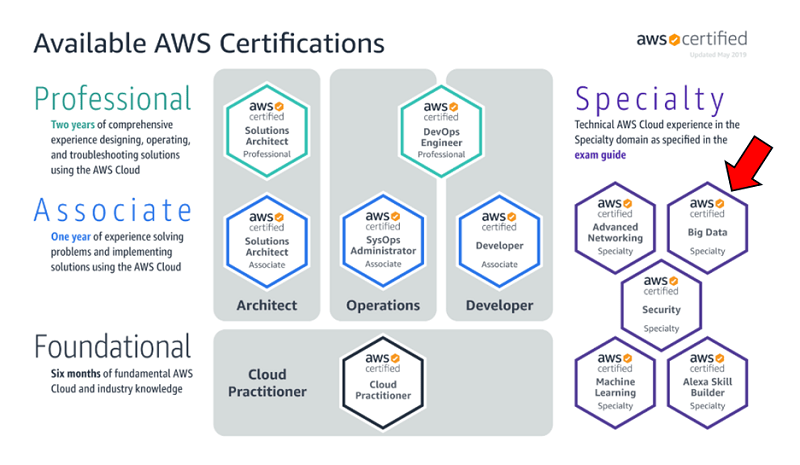Who is a Solution Architect and What is Their Role? Role and responsibilities
In the ever-evolving world of technology and business, the role of a solution architect has become increasingly crucial. But who exactly is a solution architect, and what do they do? This comprehensive guide will explore the solution architect role, their responsibilities, and the vital part they play in bridging the gap between business needs and technological solutions.
Understanding the Solution Architect Role
A solution architect is a professional who designs, describes, and manages the solution engineering in relation to specific business problems. This role is pivotal in ensuring that the solution fits not only the purpose but also the overall enterprise architecture and other business requirements.
The Importance of Solution Architecture
Solution architecture is one of the key practices for any IT project. It’s the process of designing, describing, and managing the solution engineering in relation to specific business problems. A successful solution architect must be able to design and guide the development of solutions for business problems, taking into account the existing enterprise architecture and technical architecture.
For a deeper understanding of how solution architects fit into the broader IT landscape, check out our article on developer grading positions in IT.
Key Responsibilities of a Solution Architect
The role and responsibilities of a solution architect are multifaceted and critical to the success of any project. Here are some of the primary duties:
- Analyzing Business Requirements: A solution architect must understand and analyze the business needs to create a comprehensive solution.
- Designing the Solution: They are responsible for creating the overall vision for the solution that meets the business needs.
- Ensuring Technical Feasibility: The architect must ensure that the proposed solution is technically feasible and aligns with the organization’s technology strategy.
- Guiding the Development Team: Solution architects work closely with development teams to ensure the solution is implemented correctly.
- Managing Risks: They need to identify potential risks and develop strategies to mitigate them.
- Ensuring Best Practices: A solution architect must ensure that best practices are followed throughout the development process.
- Bridging Communication: They act as a bridge between technical and non-technical stakeholders, ensuring effective communication.
Additional Responsibilities
- Technology Selection: Solution architects are often responsible for choosing the right technologies and tools for a project.
- Performance Optimization: They need to ensure that the solution performs efficiently and can scale as needed.
- Security Integration: In today’s digital landscape, solution architects must incorporate robust security measures into their designs.
- Cost Management: They need to balance technical requirements with budgetary constraints.
- Compliance Adherence: Ensuring that solutions comply with relevant industry standards and regulations.
The Skill Set of a Successful Solution Architect
To excel in the role of a solution architect, one must possess a diverse skill set that combines technical expertise with business acumen. Here are some essential skills:
- Technical Proficiency: Strong understanding of various technologies, frameworks, and platforms.
- Business Knowledge: Understanding of business processes and the ability to align technology with business goals.
- Communication Skills: Ability to explain complex technical concepts to non-technical stakeholders.
- Problem-Solving Skills: Aptitude for finding innovative solutions to complex problems.
- Leadership: Ability to guide and mentor development teams.
- Project Management: Skills in managing timelines, resources, and deliverables.
- Adaptability: Keeping up with rapidly changing technologies and methodologies.
Advanced Skills
- Systems Thinking: The ability to understand how different parts of a system interact and influence each other.
- Strategic Planning: Long-term vision to align solutions with future business goals.
- Negotiation Skills: Balancing the needs of different stakeholders and making trade-offs when necessary.
- Data Analysis: Understanding and interpreting data to make informed decisions.
- Change Management: Guiding organizations through the adoption of new solutions.
For more on the importance of communication skills in IT, including for solution architects, read our article on what is netiquette.
Solution Architect vs. Other Architectural Roles
It’s important to understand how the solution architect role differs from other architectural positions:
Solution Architect vs. Enterprise Architect
While a solution architect focuses on specific solutions for particular business problems, an enterprise architect is concerned with the overall technology strategy of the organization. Enterprise architecture looks at the big picture, ensuring that all solutions fit within the broader technological ecosystem of the company.
Solution Architect vs. Technical Architect
A technical architect (also known as infrastructure architect) typically focuses on the technical implementation and hardware-specific aspects of a solution. In contrast, a solution architect has a broader view, considering both business and technical aspects.
Solution Architect vs. Software Architect
Software architects primarily focus on the software development aspects of a solution, including coding standards and software design patterns. Solution architects, while they may be involved in these aspects, also consider the broader business context and overall solution design.
The Path to Becoming a Solution Architect
The journey to becoming a solution architect often involves several steps:
- Education: Typically, a degree in computer science, information technology, or a related field is required.
- Experience: Most solution architects have several years of experience in IT, often starting as developers or system administrators.
- Specialization: Developing expertise in specific technologies or industries can be beneficial.
- Certification: Many solution architects pursue certifications to validate their skills.
Solution Architect Certification
Several organizations offer solution architect certifications. Some popular ones include:
- AWS Certified Solutions Architect: For those working with AWS technologies.
- Microsoft Certified: Azure Solutions Architect Expert: For architects working with Microsoft Azure.
- The Open Group Certified Architect (Open CA): A vendor-neutral certification for IT architects.
- Salesforce Certified Technical Architect: For those specializing in Salesforce solutions.
These certifications can validate an architect’s skills and knowledge, potentially leading to better career opportunities.
The Role of Solution Architects in Different Industries
Solution architects play crucial roles across various industries, adapting their skills to meet sector-specific challenges:
Financial Services
In the financial sector, solution architects must design systems that are not only secure and compliant with regulations but also capable of handling high-volume transactions and real-time data processing.
Healthcare
Solution architects in healthcare focus on creating interoperable systems that can handle sensitive patient data while complying with strict privacy regulations like HIPAA.
E-commerce
In e-commerce, solution architects design scalable platforms that can handle peak loads during sales events and provide seamless customer experiences across multiple channels.
Manufacturing
Solution architects in manufacturing often work on IoT solutions, supply chain optimization, and systems that integrate with industrial control systems.
Government
In the public sector, solution architects must navigate complex bureaucracies and design systems that can serve diverse citizen needs while maintaining high levels of security and transparency.
The Future of Solution Architecture
As technology continues to evolve, so does the role of the solution architect. Here are some trends shaping the future of solution architecture:
- Cloud Architecture: With the increasing adoption of cloud computing, solution architects need to be well-versed in cloud technologies. For more on cloud computing, check out this Cloudflare article on what is the cloud.
- Artificial Intelligence and Machine Learning: These technologies are becoming increasingly important in solution design.
- Internet of Things (IoT): Solution architects need to consider how IoT devices integrate into overall solutions.
- Cybersecurity: With growing security threats, solution architects must prioritize security in their designs.
- Agile and DevOps: Familiarity with these methodologies is becoming crucial for solution architects.
Emerging Trends
- Edge Computing: As processing moves closer to data sources, solution architects must adapt their designs accordingly.
- Blockchain: Understanding of distributed ledger technologies is becoming increasingly valuable.
- Quantum Computing: While still emerging, solution architects should start considering the potential impacts of quantum computing on system design.
- Green IT: Sustainability is becoming a key consideration in solution design.
- Augmented and Virtual Reality: These technologies are opening new possibilities for user interfaces and data visualization.
The Impact of Solution Architects on Business Success
Solution architects play a vital role in ensuring the success of IT projects and, by extension, the success of the business. Here’s how they contribute:
- Aligning Technology with Business Goals: By understanding both the technical and business aspects, solution architects ensure that technology solutions support business objectives.
- Reducing Risks: Through careful planning and risk management, solution architects help minimize project failures.
- Optimizing Costs: By designing efficient solutions, they can help reduce unnecessary costs.
- Improving Time-to-Market: Well-designed solutions can be implemented more quickly, giving businesses a competitive edge.
- Ensuring Scalability: Solution architects design with future growth in mind, ensuring solutions can scale as the business grows.
Measuring the Impact
To quantify the impact of solution architects, organizations often look at metrics such as:
- Reduction in project failure rates
- Improved system performance and uptime
- Decreased time-to-market for new products or services
- Increased ROI on technology investments
- Higher user adoption rates for new systems
Challenges Faced by Solution Architects
While the role of a solution architect is rewarding, it comes with its share of challenges:
- Keeping Up with Technology: The rapid pace of technological change requires constant learning and adaptation.
- Balancing Stakeholder Needs: Solution architects must often mediate between different stakeholders with conflicting priorities.
- Managing Complexity: As systems become more interconnected, managing their complexity becomes increasingly challenging.
- Ensuring Security: With cyber threats evolving constantly, maintaining robust security is an ongoing challenge.
- Budget Constraints: Solution architects often need to find creative ways to meet business needs within limited budgets.
Conclusion: The Central Role of Solution Architects
In today’s technology-driven business world, solution architects play a central role in ensuring that technology solutions meet business needs effectively and efficiently. They bridge the gap between business requirements and technical implementation, ensuring that solutions are not only technically sound but also aligned with business goals.
The role of a solution architect is challenging but rewarding, requiring a unique blend of technical expertise, business acumen, and interpersonal skills. As technology continues to evolve and become more complex, the importance of skilled solution architects will only grow.
Whether you’re aspiring to become a solution architect or working with one on your next project, understanding this crucial role can help you appreciate the value they bring to the table. In the end, successful solution architects are key to creating technology solutions that drive business success.
For more insights into the world of software development and architecture, check out our article on top software development companies in Poland.
As businesses continue to digitize and transform, the demand for skilled solution architects is likely to increase. Those who can effectively balance technical knowledge with business acumen, while staying ahead of emerging technologies, will find themselves well-positioned for success in this dynamic and rewarding field.













